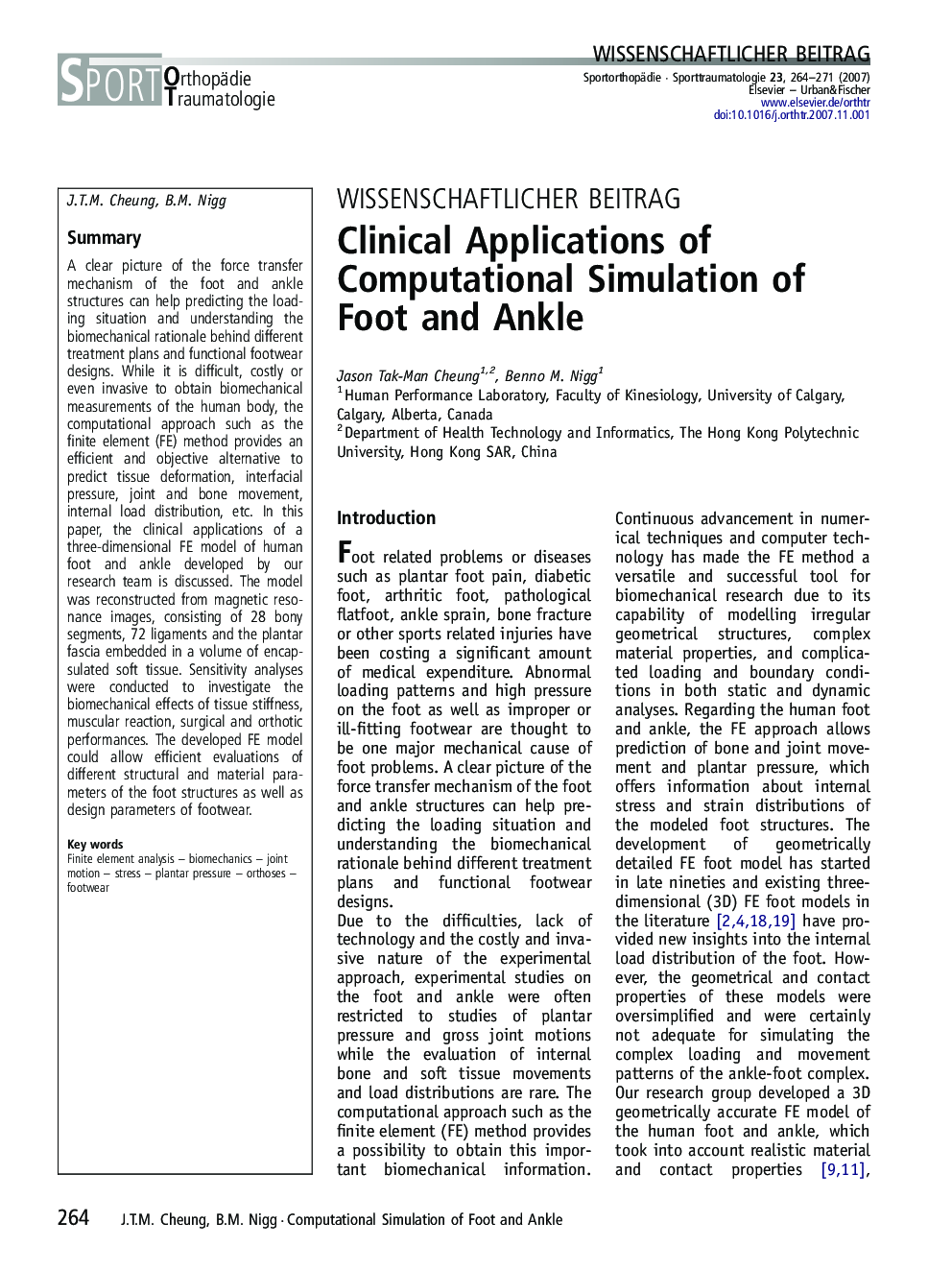| Article ID | Journal | Published Year | Pages | File Type |
|---|---|---|---|---|
| 2741278 | Sports Orthopaedics and Traumatology | 2008 | 8 Pages |
SummaryA clear picture of the force transfer mechanism of the foot and ankle structures can help predicting the loading situation and understanding the biomechanical rationale behind different treatment plans and functional footwear designs. While it is difficult, costly or even invasive to obtain biomechanical measurements of the human body, the computational approach such as the finite element (FE) method provides an efficient and objective alternative to predict tissue deformation, interfacial pressure, joint and bone movement, internal load distribution, etc. In this paper, the clinical applications of a three-dimensional FE model of human foot and ankle developed by our research team is discussed. The model was reconstructed from magnetic resonance images, consisting of 28 bony segments, 72 ligaments and the plantar fascia embedded in a volume of encapsulated soft tissue. Sensitivity analyses were conducted to investigate the biomechanical effects of tissue stiffness, muscular reaction, surgical and orthotic performances. The developed FE model could allow efficient evaluations of different structural and material parameters of the foot structures as well as design parameters of footwear.
